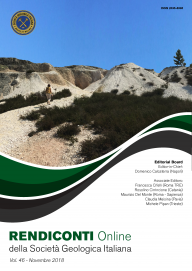
Assessing shallow landslide susceptibility by using the Generalized Additive Model: a case study
Carlotta Bartelletti (1), Yuri Galanti (1), Michele Barsanti (2), Roberto Giannecchini (1),
Giacomo D’Amato Avanzi (1), Maria Giuseppina Persichillo (3), Massimiliano Bordoni (3), Claudia Meisina (3), Andrea Cevasco (4) & Jorge Pedro Galve (5)
(1) Dipartimento di Scienze della Terra, Università di Pisa, Via S. Maria, 53, 56126, Pisa.
(2) Dipartimento di Ingegneria Civile e Industriale, Università di Pisa, Largo L. Lazzarino, 56122, Pisa.
(3) Dipartimento di Scienza della Terra e dell'Ambiente, Università degli studi di Pavia, Via Ferrata, 1, 27100, Pavia.
(4) Dipartimento di Scienze della Terra dell'Ambiente e della Vita, Università degli studi di Genova, Corso Europa, 26, 16132, Genova.
(5) Departamento de Geodinámica, Universidad de Granada, Campus Universitario Fuentenueva, 18071, Granada.
Corresponding author e-mail: galanti@dst.unipi.it.
Abstract
Keywords
Get Full Text